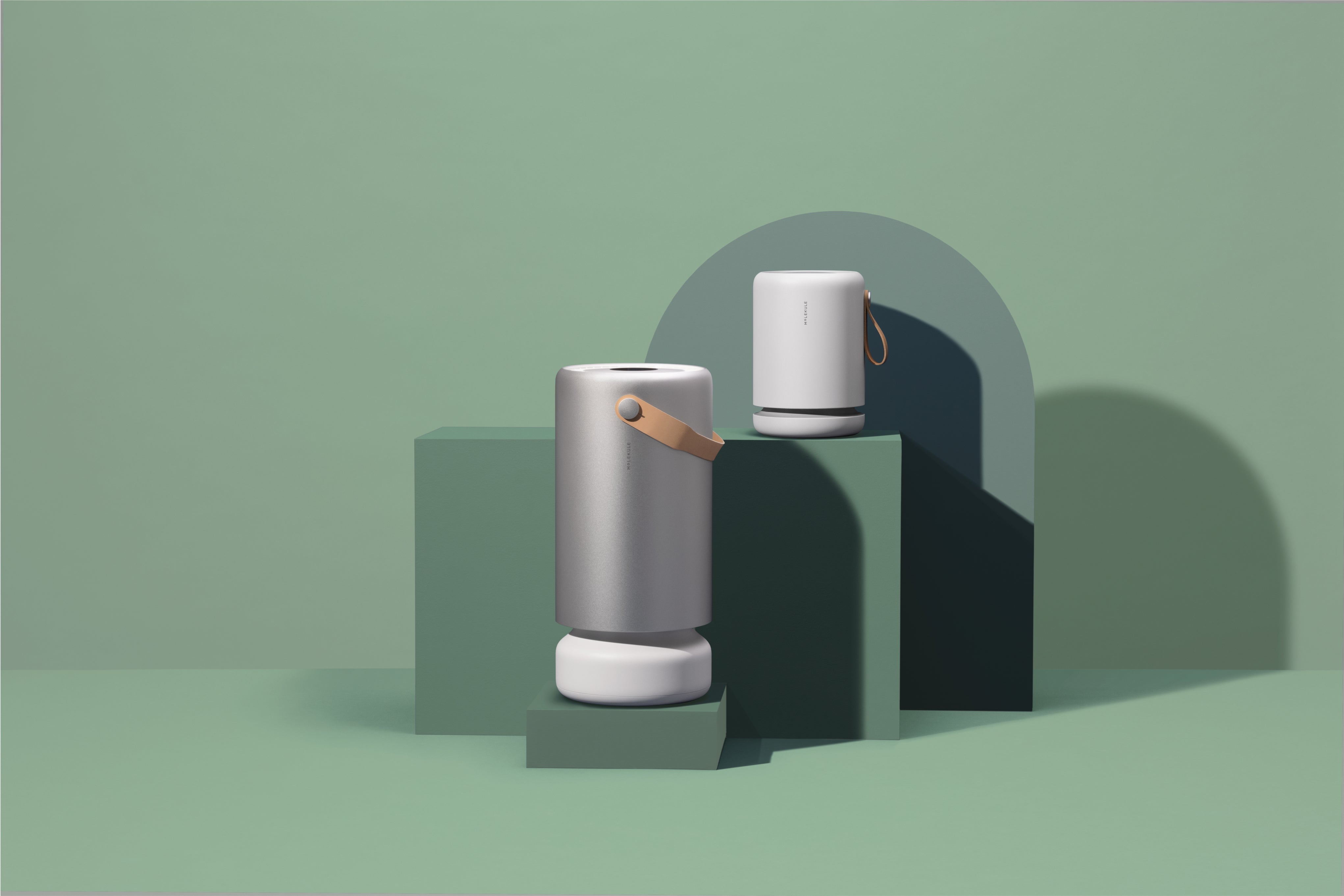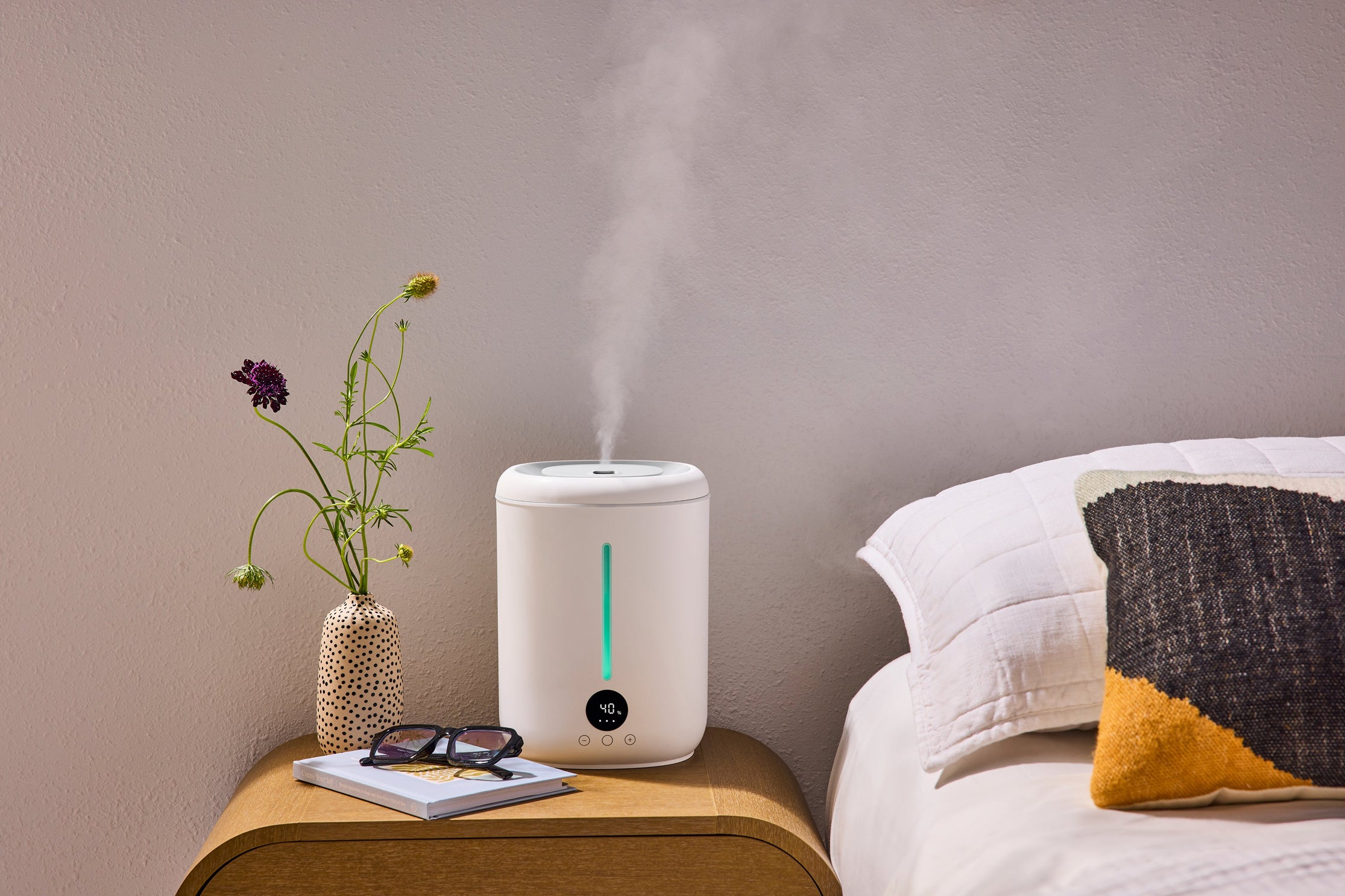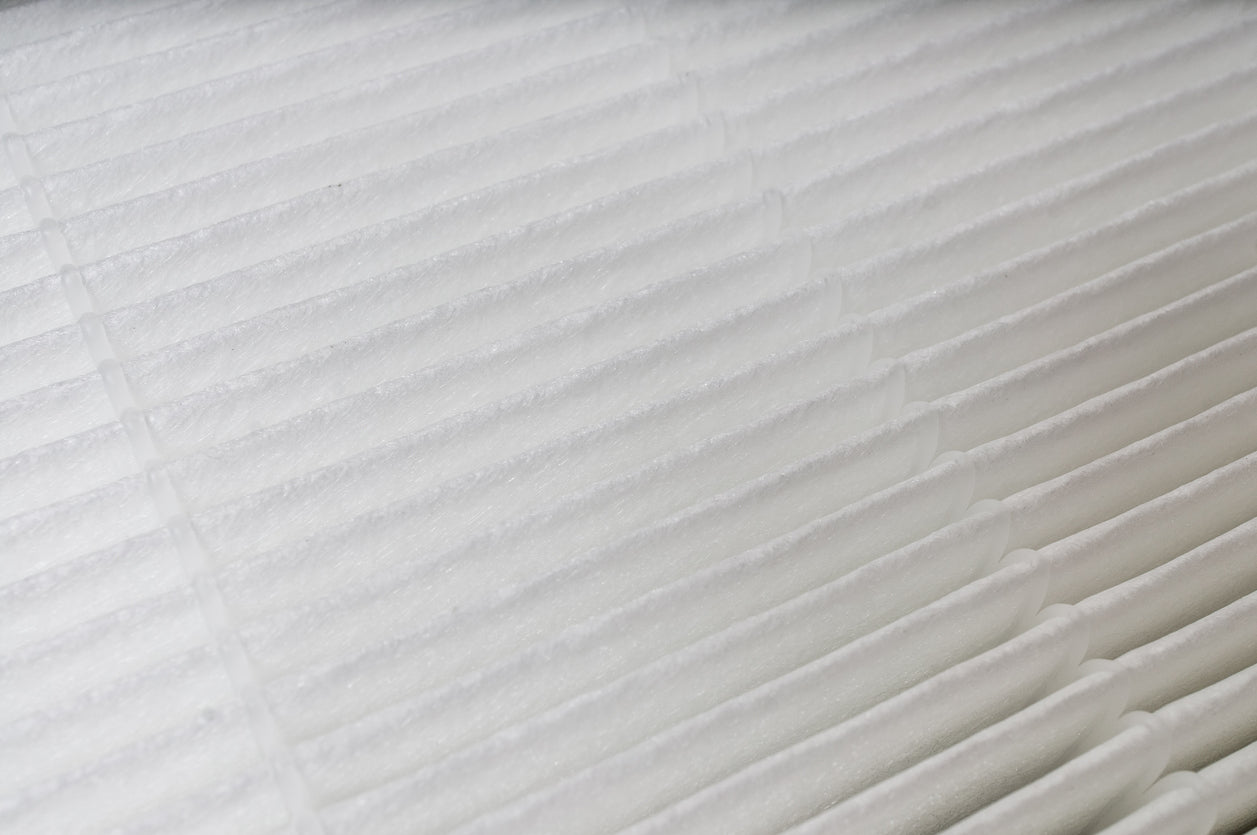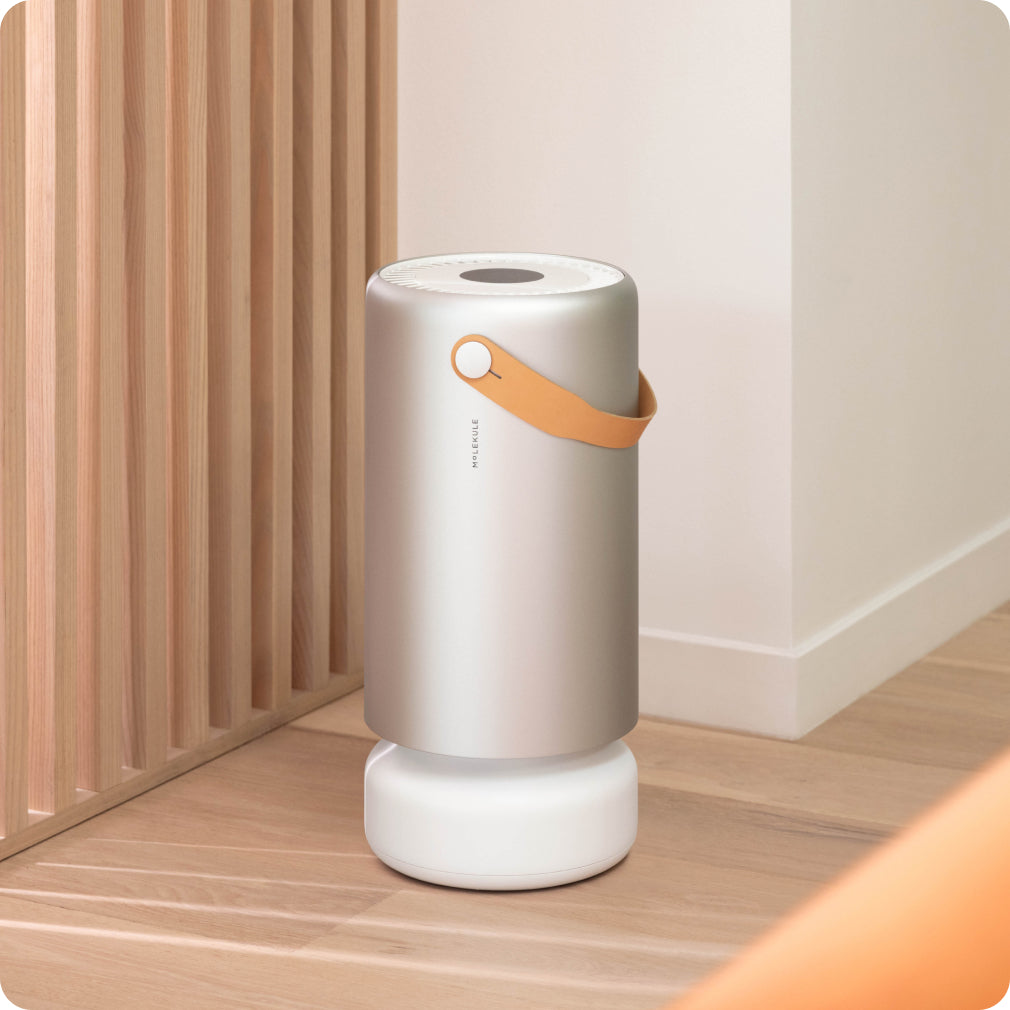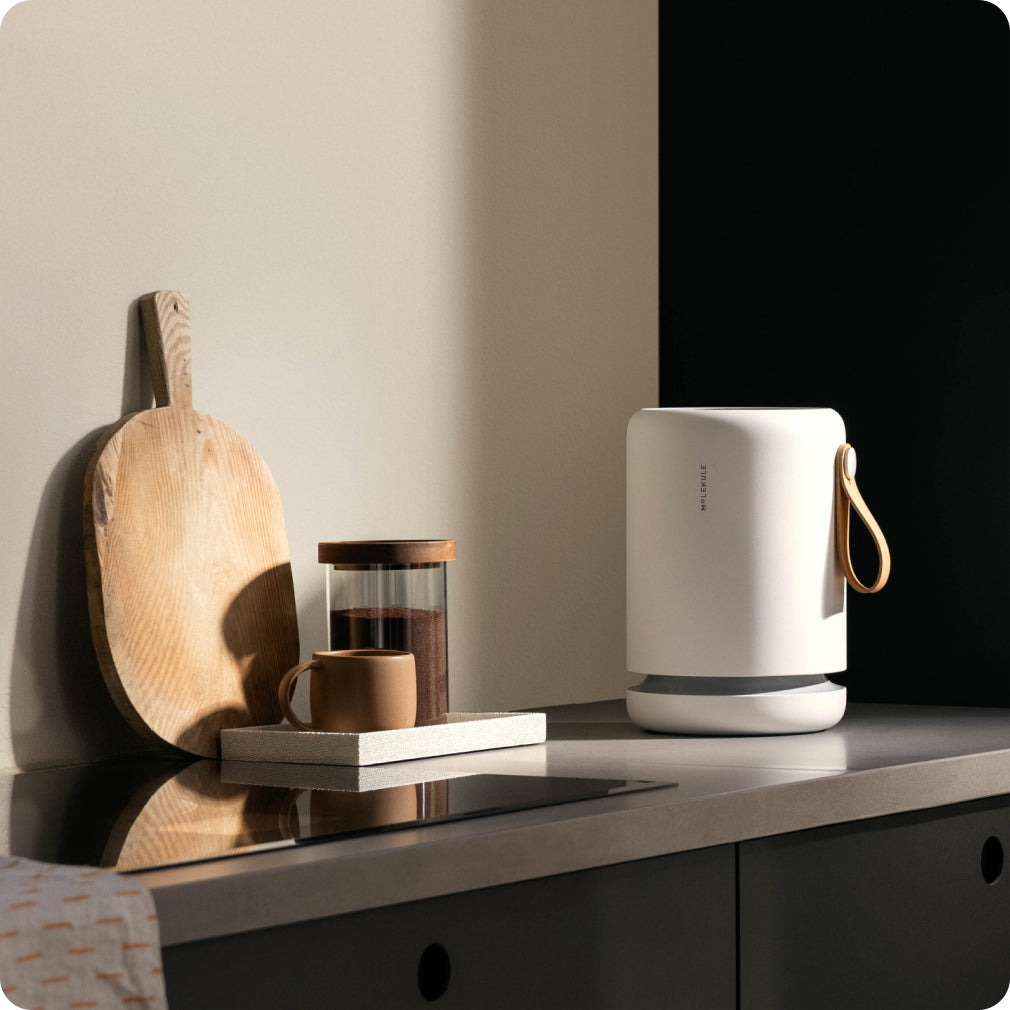Updated by Molekule staff on 10/20/22
When you are researching the best air purifier to use in your home, a term you will see again and again is “HEPA.” Some air purifiers use HEPA filters, while others may use terms like “HEPA-like” or “HEPA-style.” Which of these terms should you look for, and which ones are just marketing jargon?
We will take a close look at what HEPA really means, what a filter has to do to meet the standard and what a manufacturer really means when they call their product “HEPA-like.”
The HEPA standard
HEPA stands for “high efficiency particulate air.” A HEPA filter generally uses a mat of dense fibers to trap particles moving through it. In order to meet the HEPA specification, an air filter must trap 99.97 percent of all particles that are 0.3 microns in diameter. It can trap smaller particles (and is generally very effective at trapping larger particles as well), but its effectiveness declines as the particles get smaller. Note that in Europe, the HEPA standard is defined a bit differently (if you see a filter with a rating that looks like H13 or U16, the European standard is being used)—generally speaking, the higher the number (regardless of the letter), the better the filter under the European standard. But in this article we are going to focus on the U.S. HEPA standard.
Official HEPA certification
HEPA is a standard defined by the U.S Department of Energy (DOE). It was originally developed in the 1940s during the Manhattan Project because the DOE needed filters capable of screening out radioactive particles at atomic test facilities. The standard does not define how the filter must be constructed or what it is made of—it simply indicates that it is capable of meeting the target number for trapping particles.
The important thing to know is that there is no official HEPA certification program for consumer residential air purifiers. It is a government standard meant to ensure proper air filtration in government and military projects. For instance, government contractors must adhere to strict standards when installing HEPA filters in the ventilation systems of nuclear facilities. They would have to prove that the filters used achieve the DOE’s HEPA standard.
Some industrial, non-government facilities, such as clean rooms and protected environments in hospitals, require HEPA filtration systems. There are 3 organizations that publish testing protocols which are used in different ways to certify that a filter captures the required 99.97% of 0.3 micron particles.
The Institute of Environmental Sciences and Technology (IEST) created a standard way to conduct tests to make sure that a filter meets the HEPA standard, although the IEST notes that it is “a basis for agreement between customers and suppliers.” This is usually the standard for HEPA filters with critical functions such as in nuclear or healthcare facilities. The IEST did not specify a pollutant, but a specific type of aerosolized oil has been used by the industry for much of HEPA filter history.
The American Society of Heating, Refrigeration, and Air Conditioning Engineers (ASHRAE) developed a protocol to test individual filters that uses a fine potassium salt dust as a pollutant. ASHRAE found that the salt particles “present a more severe challenge” than oil because they “frequently bounce off collection surfaces, increasing the chance of penetration” of the filter.
Then, because the application is slightly different, the American Society for Testing and Materials (ASTM) came up with a test specifically to measure the efficiency of vacuum cleaners with HEPA filters.
Editor’s note: At Molekule, the efficiency of our PECO-HEPA Tri-Power filters in capturing 99.97% of 0.3 micron sized particles was determined with the IEST protocol using fine potassium salt particles as the pollutant, also known as IEST-RP-CC001 Type H HEPA, and meets the standards that HEPA filters marketed as true HEPA meet.
Is there a certification process for residential HEPA filters (consumer-grade)?
A manufacturer making air purifiers for use in your home cannot go to the DOE and get a HEPA seal of approval to use on their packaging. If an air filter claims to be a HEPA filter, you are basically trusting that the manufacturer had the filters tested and that they meet the DOE standard. The EPA notes that, “there is no widely accepted definition of HEPA performance in consumer products. Thus, they are unlikely to be equivalent in performance to HEPA-designated filter systems used in health care buildings and industrial processes, but still have very high removal efficiency (i.e., usually 99% or higher) for the reported particle sizes tested.”
HEPA facts and jargon: what they all mean
This is a benchmark for filter performance, but there is a certain amount of trust involved. Underwriters Laboratories (UL) has their own safety standard testing procedure for HEPA filter units. So an air purifier or filter manufacturer could get their filter tested by UL, and if it passes, the purifier can bear the UL mark (typically, the letters “UL” in a circle, sometimes with the specific safety or performance standard ID listed below it).
True HEPA– A consumer air filter labeled True HEPA should conform the closest to the DOE standard for a HEPA air filter. At its highest efficiency, it should remove 99.97 percent of all particles that are 0.3 microns in size. InvisiClean, Aviano, Medify, Airthereal, Honeywell, Winix, GermGuardian and Levoit all make air purifiers labeled as True HEPA. Eureka makes vacuum cleaner filters marketed as True HEPA as well.
HEPA Type– Calling a filter a HEPA Type filter is essentially meaningless, as it does not conform to any standard. It might be nearly as good as a HEPA filter, or it might be completely ineffective.
HEPA Like– This is a variation on HEPA Type, although it is less common. It is just a marketing term, and you should not assume any filter with this label conforms to the actual HEPA standard.
Permanent HEPA– These filters are marketed as meeting the HEPA rating, but are also able to be washed and reused rather than replaced. However, we do not recommend washing HEPA filters, even if they are intended to be reused, because the washing process likely causes small amounts of damage to the filter that reduce its effectiveness over time.
Absolute HEPA– This is sometimes used to mean the same thing as True HEPA, although sometimes it appears to indicate a claim of even better filtration power, up to 99.999 percent at 0.3 microns, according to Terra Universal, a company that makes filters for vacuum cleaners.
More HEPA related terms you should know
Only the label True HEPA (or sometimes Absolute HEPA) has any real meaning, because it is the only label that even claims to adhere to a standard. But even that should be taken with a grain of salt, since there is no official certification procedure, so you have to trust that the manufacturer has undertaken the tests to ensure their filter meets the standard or look for the UL certification mark. For any other variation on the HEPA label, including HEPA-type or HEPA-like, it is even more unclear whether or not the filter conforms to the standard. Manufacturer-specific marketing terms for proprietary filter technology may or may not meet the standard.
The key is to look for specific numbers on labels such as: “99.97 percent of all particles at 0.3 microns in size.” If the marketing claims are fuzzy, such as “more than 99 percent of dust and pollen,” that is not the same as True HEPA. You should also be skeptical of claims that a filter is significantly better than the HEPA standard. These do exist, but mostly in industrial and medical settings, and would probably be too expensive for a consumer-grade air purifier.
There are a few other terms to watch out for that can complicate things when you are shopping for a HEPA air purifier:
CADR– This stands for “clean air delivery rate” and is shown as cubic feet of clean air per minute. Unfortunately the industry standard is to only supply the CADR for smoke, dust, and pollen, which leaves a lot out such as how a filter performs over time. A purifier’s efficiency in removing VOCs, viruses, or any other pollutant will have to be found in information supplied by the manufacturer.
“Down to…” – Some air purifiers are marketed as removing particles “down to” a certain size, such as 0.1 microns or smaller. Without any data on the percentage of those particles being removed, this number is meaningless. A block of wood will stop particles down to 0.1 microns, because a particle will run into it once in a while, but this alone does not make it an effective air purifier for particles of that size.
Carbon or activated carbon– HEPA filters are great at removing particles from the air, but they do not have any effect on gaseous pollutants, such as volatile organic compounds (VOCs) or odors. Many HEPA air purifiers claim they can remove these pollutants, However they may be hybrid purifiers with an additional carbon filter, or the HEPA filter might be impregnated with activated carbon. In any case, this is an entirely separate method of filtration and has nothing to do with whether or not the filter meets the HEPA standard.
Remember, just because the word “HEPA” is contained in the words on the label does not mean it is a legitimate HEPA filter. Look for the True HEPA designation, a UL certification that can lend more legitimacy to the product, or better still, look at the numbers presented and marketed to you. You want to see that a filter stops 99.97 percent of particles at 0.3 microns in size—anything else stated may just be marketing jargon from an unscrupulous manufacturer. If all else fails and you are still unsure, you may be best served by sticking with well-known national brands.
